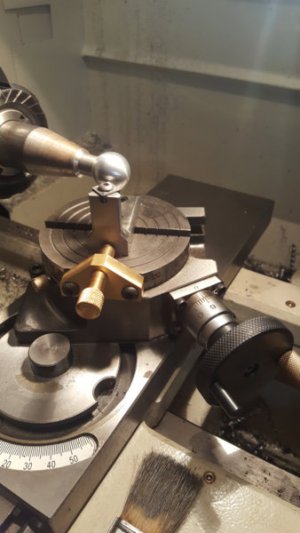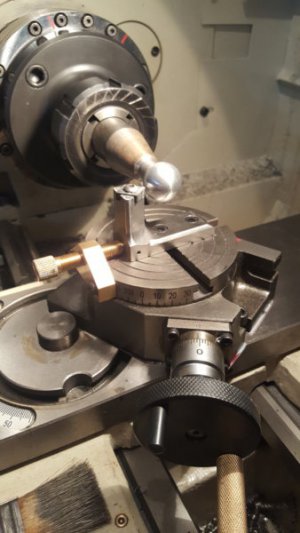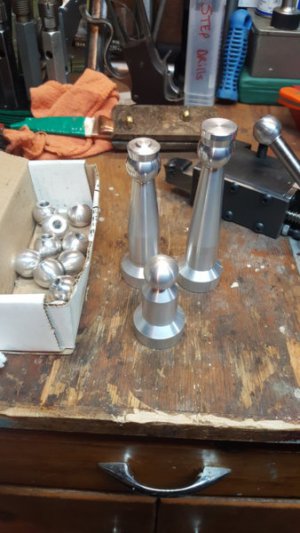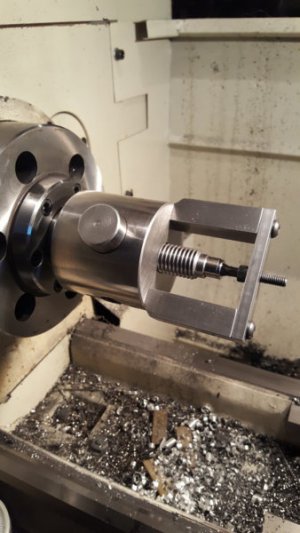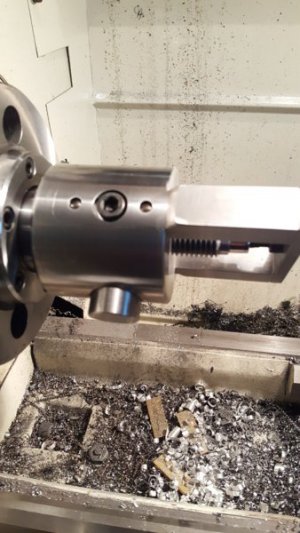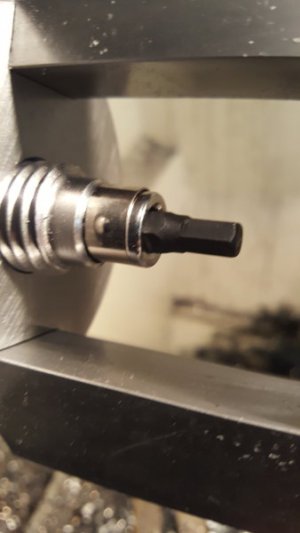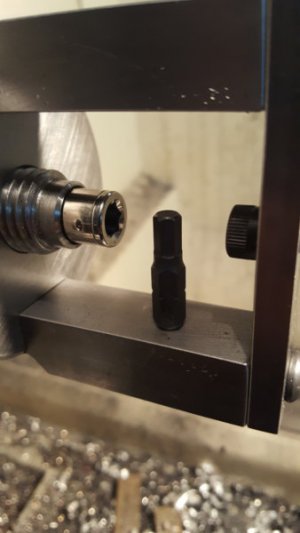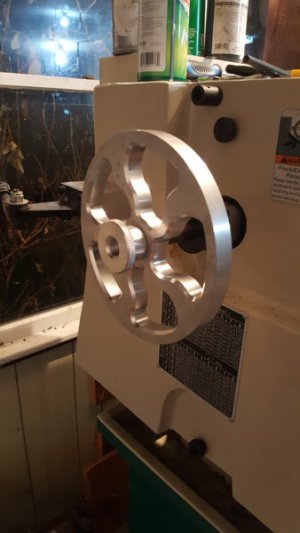Re: Shop made tooling
Here are a few items I have made over the last few years to help with projects both machine shop and automotive.
The first is a floating die holder once featured in Home Shop Machinist. It also shows the thread dial I made for the lathe.
View attachment 35518
The next picture shows a set of tools I made for assembling a Studebaker six engine.
The 3 pieces on the left are for installing the camshaft timing gear, the slim tool in the centre for installing the wrist pin and connecting rod on the piston. I had no picture of the tool itself, just a photo in the service manual of it in a vice with pin, rod and piston mounted on it so I had to reverse engineer it from there. The set on the right are for installing the timing gear on the crankshaft. For the two timing gear installers we had drawings and specs for.
View attachment 35519 View attachment 35520
The next picture shows a set of press tools for replacing the control arm bushings on a Studebaker front suspension. For these parts the manual had good photos.
View attachment 35521
The next picture shows the dies I made for the bead roller to put the channels in the floor panels for the Studebaker I am working on.
View attachment 35522
The next picture shows the arbor I made to hold the gear cutter in my little Homier mill/drill
View attachment 35523 View attachment 35524
I guess that will do for now. Basically it boils down to if I need something and don't have one I make it with my limited bit of mainly self taught machine shop practice.
Nick
View attachment 35518View attachment 35519View attachment 35520View attachment 35521View attachment 35522View attachment 35523View attachment 35524
